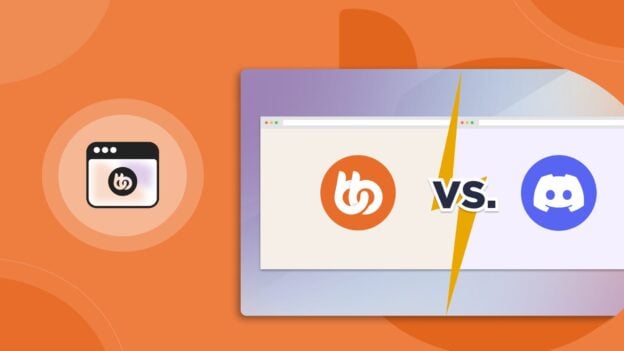Do your students feel isolated in online courses? You’re not alone. The internet offers vast knowledge anytime, anywhere. But, it often can’t match the energy and connection of a physical classroom. And that’s where the concept of a learning community comes in handy.
It bridges gaps. And, creates a strong support system for remote learning. In this way, you can foster a lively community. You can improve student’s online experience. This article will guide you in building a community. It will focus on improving connections. It will also focus on involvement. Ultimately, it aims to boost your learning.
Get ready to feel the power of online learning. You’ll have a supportive community by your side!
What is a Learning Community?
A learning community is a group of people who share a common interest in learning. It encourages students to talk to each other. They do this to exchange ideas and info. They also support each other on their learning journey. To build a learning community, your online course should have both course and community features.
You can build a community within an online course website. Or, you can build a separate community website.
Learning communities improve student engagement. They also improve how students interact. They also help students understand the course more.
Objectives of a Learning Community
Imagine a virtual classroom buzzing with ideas. That’s the magic of a community-based online course! Here, you’ll find fellow online learners are as pumped about the subject as you are. But it’s more than shared enthusiasm. Learning communities foster:
1. Interactive Learning
A learning community has one main goal: to promote interactive learning. In a learning community, members interact. They do so to exchange ideas and info. Think of a learning community as a big brainstorming opportunity. You interact with fellow learners. You also exchange ideas, info, and views. This exchange is dynamic. It ignites critical thinking and also collaborative learning. You’ll see concepts from different angles. You’ll refine your understanding. You will even find new approaches. You would not have thought of them alone.
2. Personal Connection
Online courses can feel isolating. But, communities can bridge that gap. In a learning community, members share their experiences and stories. This sharing helps create a bond between members. This also helps members feel more connected to each other. Students build a supportive network. Overall, they feel more invested in the journey and gain valuable insights.
3. Community Support
Your students can hit a roadblock or get stuck on a concept. Learning communities provide a built-in support system. Do some students need help clarifying a point? They can reach out to their peers or mentors – chances are, someone else has faced the same challenge and can offer valuable advice.
This mutual support network empowers students to overcome obstacles. Community-based teaching system also creates more support systems for members. In community-based online course, members ask for help from other members. This support is essential to help members overcome challenges and achieve their learning goals.
4. Better Engagement
Learning communities are a recipe for active participation. Discussions, shared resources, and collaborative projects naturally draw people in. In a learning community, students are more likely to participate in discussions and activities. This participation can help students feel more engaged with the course material.
Should You Create a Learning Community for Your Online Course?
Now you know what a learning community is and its objectives. You may be wondering if you should create one for your online course. The answer is yes! Joining learning communities can benefit your students. They can also help the students to focus and learn.
It grows your network
Learning communities can help grow the network of your students. By having a central place for students to connect with each other, you can more easily connect with potential students and collaborators.
Community-based online course creates a vibrant network that benefits everyone. Students gain valuable connections with peers who share their learning interests. This can open doors to future collaborations or even career opportunities. You, as the instructor, also gain a chance to connect with potential students who discover your course through enthusiastic community members.
It helps increase brand awareness
A learning community can also help increase brand awareness for your course. Engaged students become your biggest advocates. Make sure they actively participate in discussions. Because, only then they will share their positive experiences, and recommend your course to others.
Student loyalty: Finally, community-based online courses can help build student loyalty. Students who feel part of a community and connected to others are more likely to stay in your course. They will also keep taking courses from you in the future.
This translates into higher engagement with the course material. Students are more likely to participate in discussions and complete assignments throughout the program. After all, who wants to leave a supportive learning environment? With a learning community, you’re not just delivering a course. You’re creating a space where students
Examples of a Learning Community
Interest-based learning community
An interest-based course & community is a group of learners who share a common interest in a particular topic or subject. This kind of community provides a space for learners to connect with others who share their interests.
In an interest-based community, learners can share resources, discuss ideas, and collaborate on projects. This type of community can be a valuable resource for learners who want to explore a particular topic in-depth, or who simply want to connect with others who share their interests.
Action-based learning community
A group of learners who come together to engage in active learning is an action-based learning community. Active learning is a process where learners actively involve themselves in the learning process and take responsibility for their own learning.
In an action-based learning community, learners work together to identify and solve problems, share their knowledge and experiences, and reflect on their learning. This type of community provides an ideal environment for learners to develop critical thinking and also problem-solving skills.
Location-based learning community
A location-based learning community is a group of people who lives in the same area and share a common interest in learning. The location can be a city, a region, or even a specific site. Location-based learning communities often have high engagement because of the common understanding and the mutual culture.
Profession-based learning community
A profession-based learning community is a group of professionals who share a common interest in learning and professional development. You can find these communities in a variety of industries and professions. They offer members a way to connect with others who have similar interests and goals.
Ideal Online Learning Community Model
Online learning communities are slightly different from their offline counterpart. Thus, building an online learning community model also requires a different process.
The Community of Inquiry (CoI) is a model for understanding the process of online learning. This model was developed from a research study by Garrison, Anderson, and Archer that was published in 2001.
The model is based on the premise that effective online learning requires three interrelated elements: social, cognitive, and teaching presence.
- Social Presence: Imagine your online community as a bustling social hub. This thrives on interaction and communication. Students feel connected and supported by their peers and instructors. Discussions, forums, and collaborative activities all play a crucial role in building this sense of community.
- Cognitive Presence: A strong online learning community ignites critical thinking and problem-solving skills. This is achieved through activities that push students to analyze information, ask questions, and challenge ideas. Think of online debates, group projects, and assignments that require students to synthesize information and develop solutions.
- Teaching Presence: An instructor acts as a guide and facilitator in this online space. Their role is to nurture both social and cognitive presence. This means offering clear guidance, fostering discussions, and providing support to ensure students are actively engaged in the learning process.
Combining these three, you get the blueprint of a successful online learning community.
Things to Watch Out for
There are a few things to keep in mind to make your online learning community thrive.
1. Focus is too narrow: If the focus of an online learning community is too narrow, it can hamper the growth of the community. For example, if the community is focused on a single subject, it may be difficult to attract new members who are interested in other topics. Additionally, a narrow focus can also lead to a community that is less inclusive and more exclusive. This can make it difficult for new members to feel welcome and engaged, and may also lead to the community stagnating or even shrinking.
2. Website is not user-friendly: It is very important for an online community to have a website that is user-friendly. If the website is not user-friendly, it will be very difficult for members of the community to navigate and find the information they need. Additionally, a user-friendly website will help to keep members of the community engaged and coming back to the site.
3. Support is not responsive enough: When the support from mentors and members is unresponsive, it can be a major deterrent to learning. This can lead to students feeling like their questions don’t matter and that their voices aren’t being heard. And when students don’t feel like they’re a part of the community, they’re less likely to engage in the learning process.
Build a Learning Community with BuddyBoss
Online learning doesn’t have to feel isolating. Creating a lively community can make your online course engaging.
If you think community-based online teaching platform would be a valuable addition to your course, BuddyBoss is the best solution to build one. It has powerful course, community, and forum features. You can use them to create a space for students to interact and also learn from each other. So when are you building your learning community?












